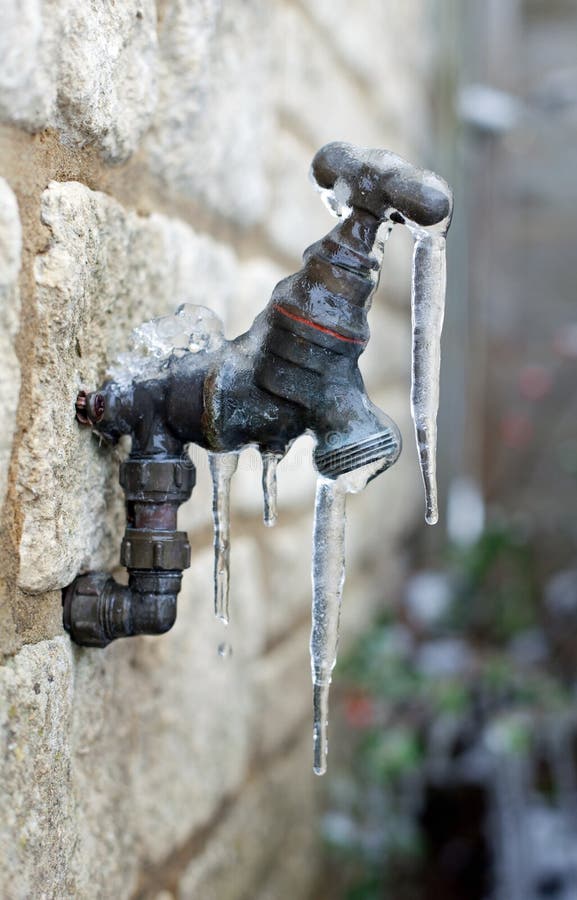Avoiding Frozen Plumbing: Best Tips for Cold Weather
Avoiding Frozen Plumbing: Best Tips for Cold Weather
Blog Article
They are making several good points about How to Prevent Your Pipes From Freezing as a whole in the article directly below.

Cold weather can wreak havoc on your pipes, specifically by freezing pipes. Here's just how to avoid it from occurring and what to do if it does.
Introduction
As temperatures decline, the threat of frozen pipes boosts, possibly leading to pricey repair services and water damages. Understanding how to prevent icy pipelines is critical for home owners in cool environments.
Recognizing Frozen Pipes
What triggers pipelines to ice up?
Pipelines freeze when revealed to temperatures below 32 ° F (0 ° C) for extended periods. As water inside the pipelines freezes, it expands, putting pressure on the pipe wall surfaces and possibly triggering them to break.
Dangers and damages
Frozen pipes can bring about water disruptions, building damage, and expensive fixings. Ruptured pipelines can flood homes and trigger comprehensive architectural damages.
Indications of Frozen Piping
Determining frozen pipes early can stop them from rupturing.
Exactly how to determine icy pipes
Search for reduced water circulation from faucets, uncommon odors or sounds from pipes, and visible frost on exposed pipes.
Avoidance Tips
Protecting prone pipes
Wrap pipes in insulation sleeves or utilize warm tape to secure them from freezing temperatures. Concentrate on pipelines in unheated or outside locations of the home.
Home heating techniques
Keep interior rooms adequately heated up, specifically areas with pipes. Open up closet doors to permit warm air to distribute around pipes under sinks.
Securing Exterior Plumbing
Garden hose pipes and outdoor faucets
Disconnect and drain garden tubes prior to winter. Install frost-proof faucets or cover outside taps with shielded caps.
What to Do If Your Pipes Freeze
Immediate actions to take
If you believe icy pipes, maintain taps available to relieve stress as the ice melts. Make use of a hairdryer or towels soaked in warm water to thaw pipes slowly.
Long-Term Solutions
Structural adjustments
Think about rerouting pipes away from exterior wall surfaces or unheated locations. Add additional insulation to attics, basements, and crawl spaces.
Updating insulation
Invest in high-grade insulation for pipelines, attic rooms, and walls. Correct insulation aids keep regular temperatures and lowers the risk of frozen pipelines.
Conclusion
Preventing frozen pipes calls for positive actions and fast responses. By understanding the reasons, indicators, and safety nets, house owners can safeguard their pipes during winter.
6 Proven Ways to Prevent Frozen Pipes and Protect Your Home
Disconnect and Drain Garden Hoses
Before winter arrives, start by disconnecting your garden hoses and draining any remaining water. Close the shut-off valves that supply outdoor hose bibs and leave the outdoor faucet open to allow any residual water to drain. For extra protection, consider using faucet covers throughout the colder months. It’s also important to drain water from any sprinkler supply lines following the manufacturer’s directions.
Insulate Exposed Pipes
Insulating your pipes is an effective way to prevent freezing. Pipe insulation is readily available at home improvement stores and is relatively inexpensive. Pay close attention to pipes in unheated areas such as the attic, basement, crawl spaces, or garage. Apply foam insulation generously to create a buffer against the cold. You can also wrap your pipes in heat tape or thermostat-controlled heat cables for added warmth.
Seal Air Leaks
Inspect your home for any cracks or openings that could let in cold air. Seal any holes around the piping in interior or exterior walls, as well as the sill plates where your home rests on its foundation. Additionally, make sure to keep your garage door closed unless you’re entering or exiting. Leaving it open creates a significant air leak that can lead to frozen pipes.
Allow Warm Air Circulation
During cold snaps, it’s essential to allow warm air to circulate evenly throughout your home. Leave interior doors ajar to promote better airflow. Open kitchen and bathroom cabinets to help distribute heat consistently around the rooms. If you have small children or pets, be sure to remove any household chemicals or potentially harmful cleaners from open cabinets for safety.
Let Faucets Drip
A small trickle of water can make a big difference in preventing ice formation inside your pipes. When temperatures drop significantly, start a drip of water from all faucets served by exposed pipes. This continuous flow helps prevent the water from freezing. Additionally, running a few faucets slightly can relieve pressure inside the pipes, reducing the chances of a rupture if the water inside does freeze.
https://choateshvac.com/6-proven-ways-to-prevent-frozen-pipes-and-protect-your-home/

We were shown that article on Prevent Frozen Pipes through a pal on a different web address. Are you aware of anybody else who is involved in the subject? Why not promote it. I treasure reading our article about Winter Plumbing Precautions: Preventing Frozen Pipes.
Get Your Estimate Now Report this page